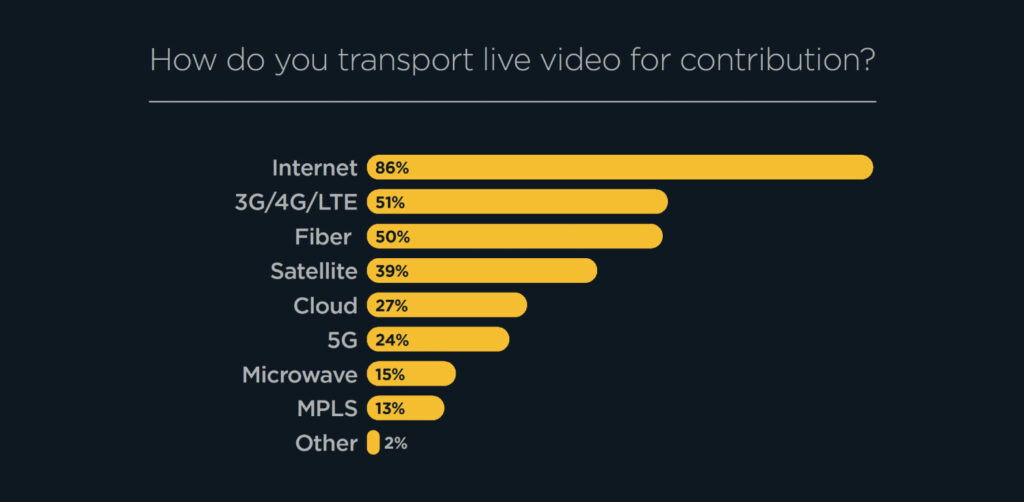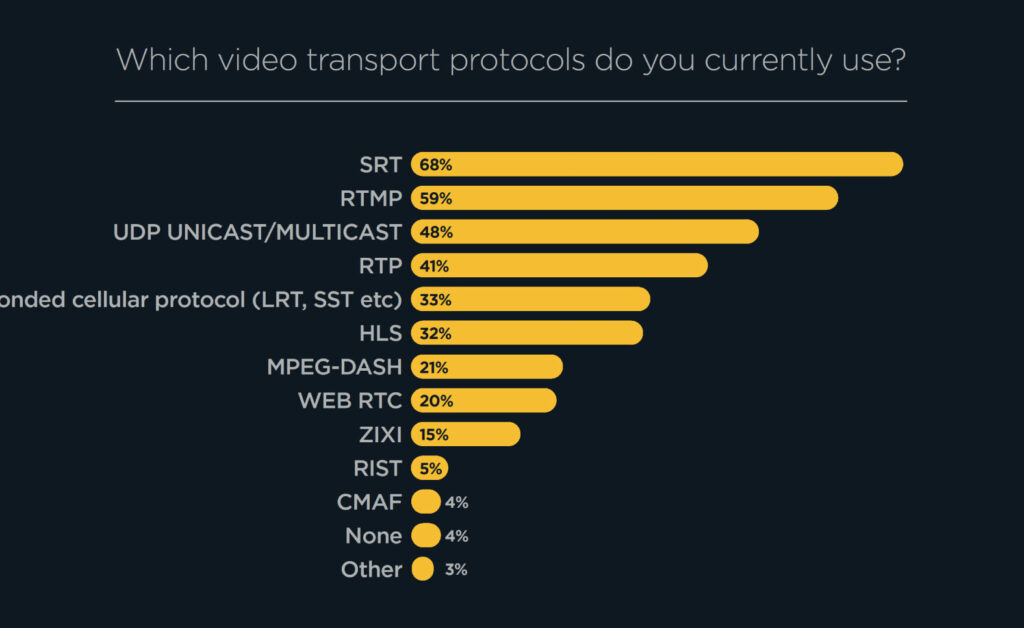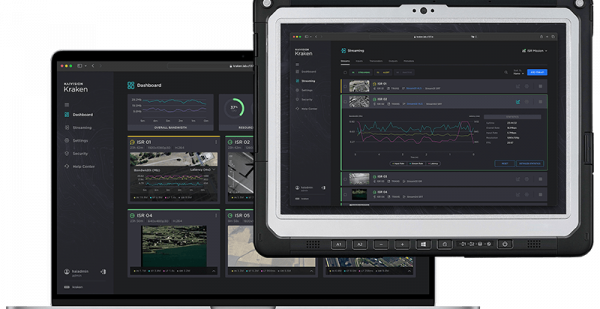How do today’s broadcasters transport live video for contribution? For most, the internet plays at least a partial role in live broadcast workflows. However, as technology continues to evolve, industry trends indicate that reliance on the internet for live video contribution continues to grow. This, of course, influences the technology mix behind live video production, including the use of transport protocols like SRT technology. This year’s Broadcast Transformation Report sheds light on these shifts in live vide.
The Internet’s Influence on Live Video Continues

How do you transport live video for contribution?
There’s no denying it: the internet has completely transformed the broadcast industry. The internet is replacing costly satellite links and dedicated fiber networks as the primary route for transporting live contribution feeds. In fact, over 86% respondents (up from 79% last year) confirmed they use the internet to contribute live video content.
The Gold Standard Video Transport Protocol
We also gathered responses that indicate which transport protocols are most used for video transport over the internet. Although RTMP is still used for many live production workflows, SRT is the most used streaming protocol for live video transport over the internet.

Which video transport protocols do you currently use?
Responses indicate that although RTMP is still used for many live production workflows, SRT is the most used streaming protocol for live video transport over the internet.
The fact that RTMP is no longer actively supported and can only carry H.264 video streams has led many broadcasters to use the SRT protocol instead. The open-source transport protocol, pioneered by Haivision, features low latency packet loss recovery technology, built-in encryption, and is content-agnostic. This makes SRT well-suited to the more bandwidth-efficient HEVC codec, especially for 4K and HDR content. The SRT protocol’s wide industry adoption by broadcasters and technology vendors alike has enabled it to make major inroads within today’s agile cloud and IP video workflows.
Furthermore, with a majority of those we surveyed using hybrid on-premise/remote workflows, it can be inferred that SRT streaming over the internet plays a critical role in supporting remote production and collaborative decentralized workflows.
SRT Technology Continues its Growth
Several signs point to the continued growth in the adoption of the SRT protocol. In just the first four months of 2023, the SRT Alliance celebrated six years since its founding while also surpassing 600 members. The newest additions to the SRT Alliance include YouTube and Paramount, signaling the protocol’s growing ubiquity in live video production for all types of content.
SRT in Action: SRT InterOp Plugfest
This year, Haivision, the SRT Alliance, and YouTube tested interoperability with the SRT protocol, highlighting compatibility with YouTube for live video contribution, as well as the latest updates to the transport protocol. Check out the webinar recording here.




























